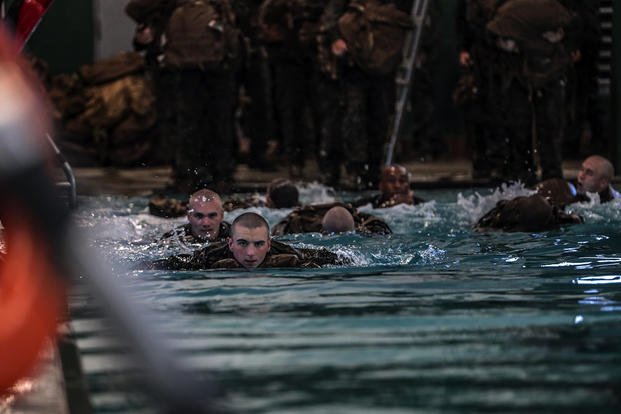"Tactical" is not just a cool buzzword added to make fitness Tacti-Cool. Tactical fitness is actually a very complex genre of fitness that has to be understood in phases as well as in general and specific terms.
There are three phases of tactical fitness for the student, candidate and the active duty member, and each of them is different. The journey through these phases will require general and specific physical fitness training for you to be successful in any tactical profession.
In previous articles and discussion, tactical fitness has been explained in three phases:
Phase 1 - Getting to the Training: You have to ace a fitness test specific to your goals in order to get to the training. But your training never can stop there, nor can you allow yourself to be stuck in phase one, only knowing how to train like your drill instructors taught you. You have to evolve and grow as your body ages and as the job requirements change throughout career progressions.
Phase 2 - Getting Through the Training: Training for the specifics of your selection and future is critical to your success when going through basic or advanced training programs. A general level of fitness typically will suffice for the basic level of training. Sometimes, being a good high school athlete is enough to do well at boot camp. However, it depends on what your goals are after basic training. Getting into special programs requires a new level of fitness that many people neglect or do not know the level of fitness required in their future. When you see programs that boast an attrition rate of 50% or more, you can be sure that most of those candidates did not prepare to get through the training, specifically.
Phase 3 - Maintaining Active-Duty, Job-Related Fitness: With a focus on all the elements of fitness and stress mitigation, being older longer than you are younger in this process is key to creating longevity -- not only for your career but for post-career living.
Some influencers in the tactical fitness world have added a fourth phase that is very important, especially if you care about your quality of life after you have served and successfully navigated the first three phases. Consider post-tactical career fitness as Phase 4 of tactical fitness.
Though not much has been created for the post-tactical career, it is typically a balance of staying active with resistance training, more non-impact cardio than running or load bearing, flexibility and mobility, and working around previous injuries sustained from time in service. Some options are in the New Rules for Fitness Over Forty article and fitness series.
Tactical Fitness: General and Specific Terms
As with any type of fitness, there are general and specific terms. When someone trains to get their body to a level of fitness that incorporates strength, power, speed, agility, cardio endurance, muscle stamina, flexibility and mobility (the elements of fitness), it creates a well-rounded tactical foundation.
Generally speaking, a tactical athlete needs to be good at the above elements of fitness. Being really good (or great) at one or two can be a detriment to other elements (in some cases) if enduring advanced selection programs. But that is the tactical fitness foundation you need generally to do your job and stay healthy. The level of fitness for that general foundation is capable of enduring most training programs, most days on the job, and is sufficient for most tactical professions.
However, if your job requires a specialized skill set, a competitive application process and a challenging selection program, specific training to many of the tested events is also critical to success.
It really depends on the level of fitness you are seeking as to whether a general training program or a specific training program is required (as well as what phase you are in). For most people in the military, a general training program will help you meet the physical standards of biannual fitness tests, maintain your health and wellness, keep the uniform fitting nicely as you age and meet the day-to-day job requirements.
Specific training programs are needed to address any physical weaknesses you may have within the elements of fitness. Also, recovery from injury or illness and workouts to de-stress, as well as performing at advanced levels in competitive application processes, require you to get very specific with your training to improve these tested abilities.
Train hard to maintain your level of fitness generally. Train harder to build specific adaptations to improve your skills and abilities as well as reduce weaknesses. Training a weakness is not easy, and specifically addressing it is a requirement to achieving any career goal.
Stew Smith is a former Navy SEAL and fitness author certified as a Strength and Conditioning Specialist (CSCS) with the National Strength and Conditioning Association. Visit his Fitness eBook store if you're looking to start a workout program to create a healthy lifestyle. Send your fitness questions to stew@stewsmith.com.
Want to Learn More About Military Life?
Whether you're thinking of joining the military, looking for fitness and basic training tips, or keeping up with military life and benefits, Military.com has you covered. Subscribe to Military.com to have military news, updates and resources delivered directly to your inbox.


















